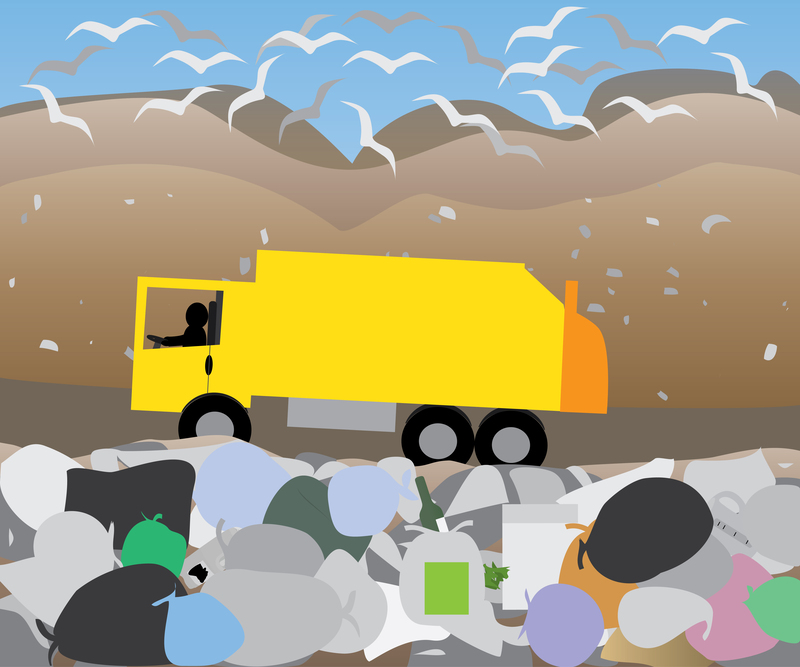Best Practices for PPE Waste During and After a Health Crisis
The management of Personal Protective Equipment (PPE) waste has become a crucial issue during and after health crises such as pandemics, outbreaks, and epidemics. As the use of gloves, masks, gowns, face shields, and other protective gear surges, so too does the accumulation of PPE waste. Without proper disposal and treatment, PPE waste can pose significant threats to public health, wildlife, and the environment.
In this comprehensive guide, we delve into best practices for PPE waste management during and after a health crisis. We will explore essential strategies for businesses, healthcare facilities, government agencies, and the general public to minimize environmental impact while maintaining public health safety.
Understanding PPE Waste and Its Impact
The term PPE waste refers to all disposable personal protective equipment that has been used primarily in healthcare, caregiving, and community settings. Examples of PPE include:
- Masks (surgical, N95, cloth, etc.)
- Gloves (latex, nitrile, vinyl, etc.)
- Gowns
- Goggles and face shields
- Shoe covers and aprons
During health crises such as the COVID-19 pandemic, the sudden surge in PPE consumption led to enormous quantities of medical and non-medical PPE waste. This waste, if not handled with care, can:
- Spread pathogens if contaminated masks or gloves are thrown into general waste streams
- Cause environmental pollution, especially if plastics from single-use PPE end up in landfills or oceans
- Endanger waste handlers, cleaners, and the wider community due to improper PPE disposal practices

Key Challenges in PPE Waste Management
- Lack of public awareness: Many individuals are unaware of the correct disposal methods for PPE waste, often tossing it in regular trash.
- Insufficient infrastructure: Not all regions have designated bins or specialized waste-handling services for infectious waste.
- Pandemic surges: Health crises lead to rapid increases in PPE consumption, overwhelming existing collection and treatment systems.
- Resource constraints: Developing countries may struggle with limited access to safe waste management technologies.
The stakes are high, making it imperative to implement and follow best practices for PPE waste disposal and reduction during and after any health emergency.
Effective PPE Waste Management: Key Principles
Optimizing the handling of PPE waste during health emergencies relies on a set of core principles:
- Segregation: Always separate PPE waste from regular garbage at the point of disposal.
- Containment: Use appropriate, leak-proof bins, preferably color-coded (often yellow or red for infectious waste).
- Disinfection: In some cases, consider pre-treating or disinfecting used PPE before disposal.
- Treatment: Rely on appropriate waste treatment methods, such as incineration or autoclaving, to neutralize risks.
- Education and communication: Regularly inform and train staff and the public on PPE waste protocols.
PPE Waste Best Practices During a Health Crisis
1. Proper Segregation of PPE Waste
Segregating PPE waste at its source is essential. This entails:
- Placing PPE disposal bins: Strategically install labeled/colored bins in all healthcare and public settings.
- Preventing cross-contamination: Never mix used PPE with regular waste. Infectious waste should be kept apart from recyclables and food waste.
- Providing clear instructions: Use signage and staff guidance to help users distinguish between PPE waste and others.
2. Selecting Appropriate Disposal Containers
- Use leak-proof, puncture-resistant bags and containers for all PPE waste.
- Employ double-bagging for visibly contaminated or infectious PPE.
- Choose containers with secure closures to prevent accidental spills or exposures.
- Place bins away from public access while ensuring they remain easily accessible to staff.
3. On-Site Collection and Transportation
- Regularly remove PPE waste to minimize exposure in healthcare or high-traffic settings.
- Staff must wear fresh PPE when handling bags or containers.
- Follow established standard operating procedures (SOPs) for transporting waste without spills or leaks.
4. Safe Disposal Methods
- Autoclaving: Steam sterilization of infectious PPE waste is highly effective for hospitals and large facilities.
- Incineration: Burning PPE waste at high temperatures destroys pathogens and reduces waste volume.
- Landfilling: Only consider after proper treatment; avoid unlined landfills to prevent soil and groundwater pollution.
Note: Never burn PPE in open environments, nor dispose of in waterways or general waste streams, as this can amplify environmental and health risks.
5. Education and Behavioral Communication
- Post instructions on proper PPE waste management in multiple languages.
- Conduct regular training for healthcare staff and cleaning personnel.
- Leverage social media and public campaigns to educate the wider community about correct PPE disposal.
PPE Waste Best Practices After a Health Crisis
1. Sustainable Reduction of PPE Usage
Once the acute phase of a health crisis ends, reducing unnecessary PPE usage becomes paramount:
- Promote reusable, washable PPE (e.g., cloth masks, gowns) where safe and appropriate.
- Re-evaluate PPE distribution policies to avoid stockpiling and wastage.
- Encourage innovations in biodegradable or recyclable PPE materials.
2. Enhanced Recycling and Recovery Efforts
- Collaborate with recycling companies to study safe PPE material recovery.
- Support R&D for technologies that decontaminate and repurpose single-use PPE.
- Launch pilot programs for recycling non-infectious masks and gowns.
3. Policy Updates and Regulatory Enforcement
- Review existing waste management policies in light of lessons learned during the crisis.
- Introduce stricter mandates for clinical and community settings regarding PPE waste.
- Audit facilities to ensure compliance with PPE waste best practices.
4. Ongoing Training and Public Awareness
- Move from crisis-response education to sustained awareness campaigns.
- Involve schools, workplaces, and local governments in championing responsible PPE disposal.
How Businesses Can Enhance PPE Waste Practices
- Appoint a PPE waste coordinator: Designate team members to oversee waste segregation, collection, and disposal.
- Regularly review inventory: Avoid over-ordering PPE that may expire or exceed needs.
- Partner with hazardous waste handlers: Contract only with licensed professionals for treatment and disposal.
- Promote a green PPE policy: Opt for suppliers offering sustainable or recyclable PPE options.
- Engage the workforce: Foster a culture of responsibility and safety around PPE waste using contests, training, and incentives.
Role of Technology and Innovation in PPE Waste Management
- Smart disposal bins that count items, close automatically, and alert staff when full
- Mobile tracking apps for monitoring collection schedules and waste volumes
- Biodegradable material science for developing compostable PPE alternatives
- On-site sterilization equipment to reduce transportation and environmental impact
Community-Level PPE Waste Disposal Measures
- Install dedicated PPE waste bins at transport stations, shopping centers, pharmacies, and clinics.
- Encourage community clean-up drives to remove littered PPE safely from parks and streets.
- Launch educational workshops for households on disposal and minimal use of single-use PPE.
- Coordinate with local governments for regular waste collection and treatment days, especially in high-risk areas.
PPE Waste Best Practices Infographic
Visual cues play a big role in shaping behavior. Consider sharing simple infographics that outline:
- Do's and don'ts for PPE disposal
- Color codes for bins & bags
- What happens to PPE after it's discarded
- Tips for reducing PPE waste at home and in the workplace
International Guidelines and Standards for PPE Waste
Organizations such as the World Health Organization (WHO) and national environmental agencies provide standardized procedures for PPE waste handling, including:
- Double-bagging: For visibly contaminated wastes
- Using color-coded containers: For clarity and safety
- Employing certified waste collection services: Especially for large generators like hospitals
- Regularly updating protocols: As new information about pathogens or PPE types arises

Frequently Asked Questions on PPE Waste Practices
-
Can used PPE be recycled?
In most cases, single-use PPE must be treated as medical or hazardous waste, due to possible contamination. However, non-infectious PPE made from recyclable materials can sometimes be processed in specialized facilities after decontamination. -
What's the safest way for individuals to dispose of masks and gloves?
Place used items in a sealed plastic bag before putting them in the appropriate waste bin; always wash hands afterward. -
Are there alternatives to disposable PPE?
Yes! Reusable masks, cloth gowns, and washable face shields can often be used in low-risk settings, reducing waste. -
What should I do if I see discarded PPE in public?
If it's safe to do so, collect it using gloves, place it in a sealed bag, and discard in a marked PPE container. Wash your hands thoroughly afterward.
Conclusion: The Responsibility of PPE Waste Management
The COVID-19 pandemic and similar health crises have demonstrated the importance of responsibly managing PPE waste to protect human health and preserve the environment. By following established best practices for PPE waste during and after a health crisis, all stakeholders can help reduce risks and support a cleaner, safer world.
Whether you're part of a healthcare team, run a business, or simply care about your community, you play a key role in the responsible disposal and reduction of PPE waste. Prioritize education, invest in sustainable alternatives, and advocate for the enforcement of effective waste management policies at all levels.
Let us turn the lessons of the past into action today for a more sustainable future--where health and environmental protection go hand in hand.
```